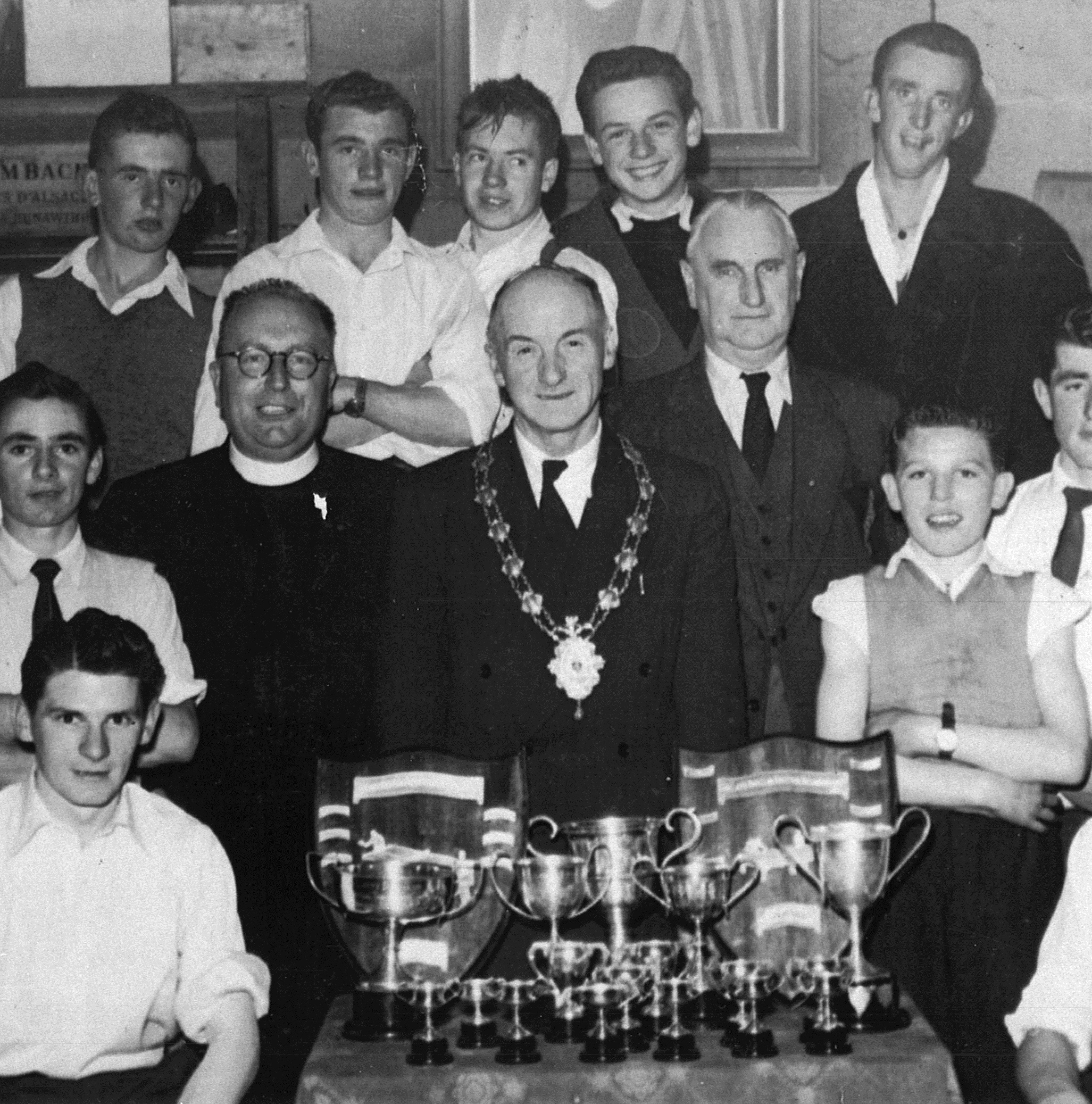Old Galway
KILOUGHTER LONG AGO (07 08 14)

This photograph of Carrabrowne National School was taken in 1936 and shows, back row, left to right; Pete Keane, Carrabrowne; Jimmy O’Brien, Kiloughter; Davey Corcoran, Carrabrowne; Willie Glynn, Kiloughter; Francis Corcoran, Carrabrowne; Stephen O’Brien,Carrabrowne; Mattie Casserley, Kiloughter; Willie Higgins, Ballindooley; Stephen O’Brien, Kiloughter; Mickey McGrath, Ballindooley; Tom Costelloe, Kiloughter; Stephen Birmingham, Kiloughter.
THE JESUIT CHURCH (31 07 2014)

On this day, July 31st, 1863, “The new Church of St Ignatius on the Sea Road in the vicinity of the city was dedicated by the Most Rev. Dr. McEvilly, Lord Bishop of Galway. Sea Road is one of the most fashionable and frequented thoroughfares in the suburbs of our city. The Church, which was commenced in 1861 is now complete with the exception of the organ, altar and some minor internal decorations; and we have no doubt the zeal of the faithful will only require such a desirable opportunity of enabling the Jesuit Fathers, whose excellent judgement in these matters is fully acknowledged, to complete the required improvements, and that nothing shall be wanted which the good taste of the architect can suggests to make everything perfect. The Church is built of hammered limestone ashlar work in courses. The south gable, or principal front, the spire and the quoins, dressings etc, being finely punched and the depths of the jambs and arches of the principal doors and windows, which are richly moulded, adds greatly to its appearance. The Church, which is Gothic in style, is in the form of a Latin Cross, 115 feet in extreme length, 36 feet wide and 70 feet across the transepts, 56 to the ridge and 110 to the top of the spire”.
THE TENNIS CLUB (24 07 2014)

The Galway Lawn tennis and Croquet Club was founded at a meeting in the Royal Hotel, Eyre Square on the 19th of May, 1900. Many of the founders were members of the British Army, the landed gentry, the professions such as doctors, solicitors, professors etc. Membership was by invitation only so there was a certain elitism attached to the club in the early days.
THE CORRIB CLUB, 150 YEARS (17 07 2014)

The Corrib Club was founded in July of 1864, 150 years ago this month. Unfortunately the minutes of the club for that year and 1865 are nowhere to be found, but the late Maurice Semple having access to minutes for most other years, produced a book entitled “A Century of Minutes, the Story of the Corrrib Club 1864-1966”, from which we publish extracts today.
THE GALWAY CLIFDEN RAILWAY (10 07 2014)

This railway line was built under the auspices of the Congested Districts Board and was of enormous importance to the people of all of Conamara. It was a great feat of engineering from the point of departure westwards from Galway station with the necessary building of bridges and tunnels by Bohermore and across the Corrib itself. In the age before the internal combustion engine and motorised traffic, it promised very good economics for tourist development and meant that local Conamara produce could find a much wider market. Clifden fishermen who landed their catch early in the morning could put it on the train, and through the railway system, it could be on sale in London fishmarkets the following morning.
THE CORRIB DRAINAGE SCHEME (03 07 2014)

The waterways of the city are of great engineering significance. Two major projects resulted in the waterways system which exists today. The first scheme was constructed between 1848 and 1858. Its primary purpose was to improve drainage thus reducing winter water levels and the areas of flooded land and also navigation, without any detrimental effect on the mills or fishery interests. So the Eglinton canal was built, the Claddagh Basin, the dredging of the Corrib, Gaol & Western rivers, tailraces, culverts, the weir & salmon pass and Steamer’s Quay at Woodquay
TRADITIONAL GALWAY BOATS (26 06 14)

“With her brown barked sail, and her hull black tar,
Her forest of oak ribs and the larchwood planks,
The cavern smelling hold bulked with costly gear,”
Some lines there from an evocative poem entitled “The Last Galway Hooker” written by Richard Murphy.
The Boys Club (19 06 2014)

Our Ladys Boys Club was founded in 1940 by Fr. Leonard Shiel S.J. The main object of the club was “To provide for the relief of poverty by helping kids in need, by promoting human services which would meet long term means, and by those means to encourage their development and give their lives a dignity which is their birthright”.
.png)